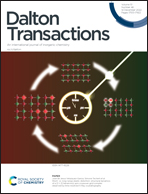Stack-dependent ion diffusion behavior in two-dimensional bilayer C3B†
Abstract
In recent years, two-dimensional (2D) C-based materials have been intensively studied due to their excellent physicochemical properties. Meanwhile, extensive research has revealed that the electrical properties of layered materials can be tuned by changing the stacking pattern. However, the tuning of ion diffusion properties through stacking remains to be explored. In this work, bilayer C3B with different stackings as a lithium-ion battery anode material is systematically investigated by first-principles calculations. The calculated results show that bilayer C3B has better electronic properties (with a band gap of 0.44 eV to 0.54 eV) and enhanced bonding strength of Li (−2.82 to −3.27 eV) compared to monolayer C3B. Moreover, the intralayer migration barrier of Li can be regulated by stacking. Interestingly, the AB stacked configuration has the lowest migration barrier of 0.100 eV, which is significantly lower than those of other stacking configurations and monolayer C3B. Further studies revealed that the formation of fast ion diffusion channels in the AB stacked configuration is due to the combined effect of layer distance and in-plane charge transfer. These results offer a new strategy for the regulation of ion diffusion properties in 2D van der Waals materials.



 Please wait while we load your content...
Please wait while we load your content...